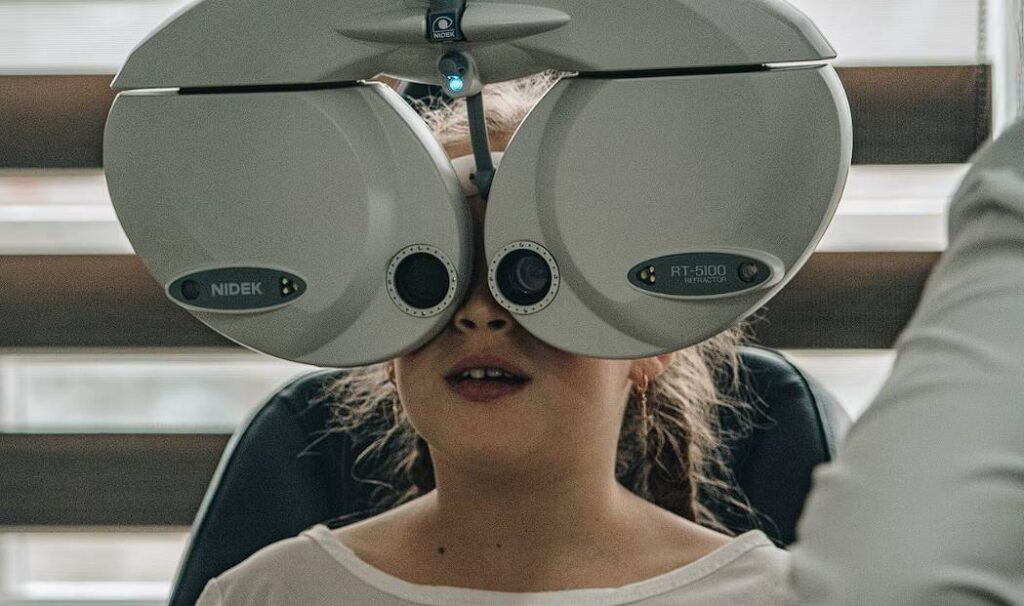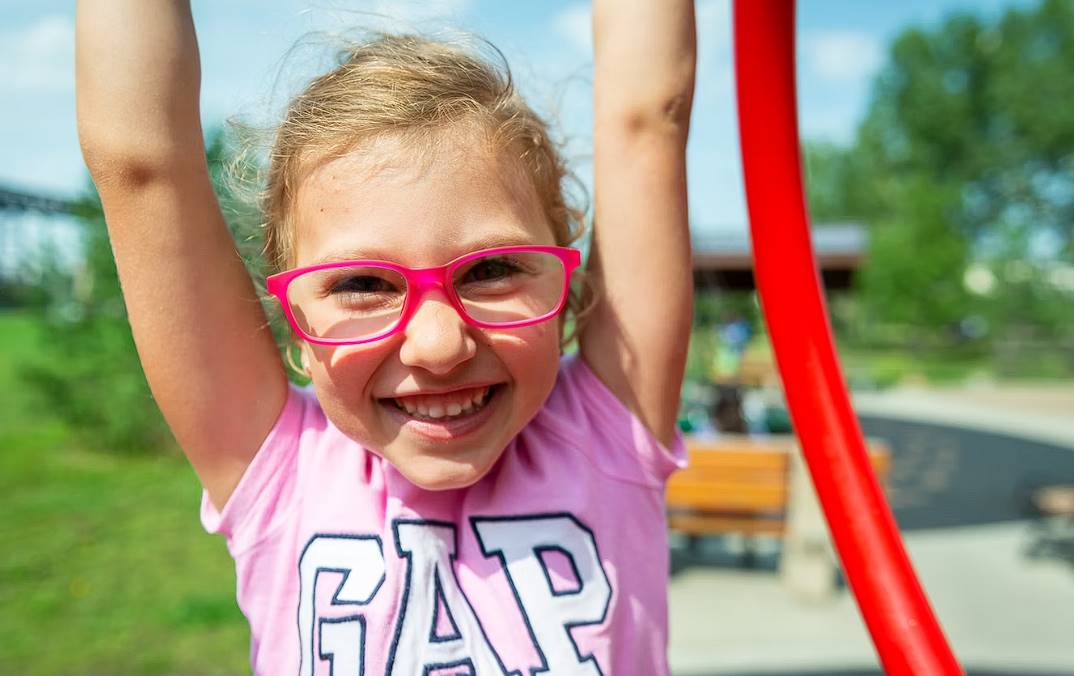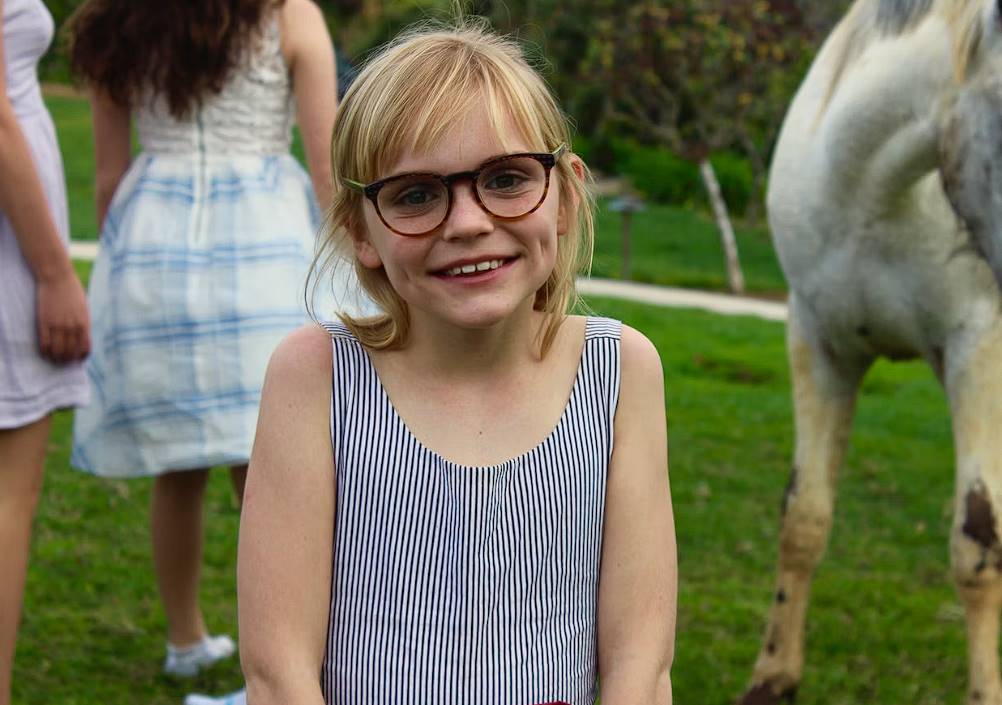A child's eye health is essential to their growth and development. Protective eyewear, such as sunglasses, plays an important role in preventing children's eyes from being damaged. From preventing eye damage to catching potential vision problems early, this article covers it all when it comes to kids and their eyewear. We'll also discuss how to choose the right one for you by weighing factors like comfort, longevity, and aesthetics.
We will also go over basic maintenance procedures to keep your kid's eyewear in pristine condition. You can aid in your child's healthy vision development and eye protection throughout their formative years by realising the significance of eyewear, making educated choices, and implementing proper care. Let's explore the realm of children's eyewear and learn how to put their eyes' comfort and well-being first.
Why Children Wear Eyeglasses
Research shows that there are multiple reasons why children need to wear glasses.
- Enhanced eyesight
- Improving the performance of a lazy eye
- Correction of eye alignment issues (such as strabismus).
- If they only have partial sight in one eye, they will be protected.
Signs Your Child Might Need Glasses
Here are some warning signals that your kid might have vision issues and need glasses:
- Squinting. If your child has trouble focusing on objects, this could indicate that he or she has a refractive error. Your kid might be able to see things more clearly and sharply if they squint.
- Head cocking to one side or covering an eye. Your child may try to improve clarity by covering an eye or tilting his or her head. One of the most common childhood eye disorders, amblyopia (lazy eye) can be diagnosed if your child displays these symptoms.
- Watching TV or using a handheld device at too close a distance from the eyes. Signs of poor eyesight include squinting, lowering the head while reading, and sitting too close to the television. Myopic people, also known as nearsighted people, have good near vision but blurry far vision. Moving in closer to something enhances the size and clarity of the image.
- Excessive rubbing of the eyes. If your child rubs his or her eyes excessively, it could be a sign of eye strain or fatigue. Allergic conjunctivitis is just one of many eye conditions that could be the cause of blurred vision.
- Having a grumble about their eyes or head. Overusing the eyes to improve the focus of blurred vision can cause discomfort and fatigue at the end of the day, which your child may be complaining about.
- Struggling to focus on schoolwork. Children with vision problems may have trouble concentrating in class because of the demands placed on their eyes by the need to shift their gaze from far away to up close and from one object to another throughout the school day.
Choosing Glasses For Children
Frame Size
Baby infants as young as a few months old can now find frames designed specifically for them. The thickness of the lens will be determined by the optical prescription, but finding a size that fits your child shouldn't be too difficult. Avoid buying your child a pair of glasses with a thick lens because the frame is too big.
Also, keep in mind that the risk of having your peripheral vision blurred or distorted increases with the lens's size because of the increased presence of higher-order aberrations near the lens's edge.
Choose An Attractive Design
Putting on eyeglasses for the first time can be intimidating for some children. Allow your child to show you their preferences, but suggest they pick out frames with a more up-to-date style. Your child's confidence will rise as they see that you agree with their choice of frames, and they will value your input.
Your kid should leave the store beaming with self-assurance about how great they look.
Metal Or Plastic?
Nowadays, there is little difference between metal and plastic frames in terms of durability, weight, or price. It is recommended to check with the optical dispenser about the metal composition of the frames you are considering.
In addition, there are hypoallergenic frames available if your child has shown signs of an allergy to a substance (such as nickel) commonly used in eyeglass frames.
Appropriate Bridge Fit
Since children's noses are still developing, there is no bridge to secure the frames. Finding appropriate eyewear for your child can be challenging.
The good news is that plastic frames now exist to fit small noses, and metal frames have adjustable nose pads. The variety of styles available and the advice of an optical dispenser will ensure that your child's nose is properly accommodated by the frame you select.
Temple Style
You can get your kid some glasses with cable temples if you're worried about them breaking or sliding off their face. These temples go behind the ears and secure the eyeglasses in place.
To keep the glasses in place, you can buy elastic straps that go behind the kid's head. For younger kids, I would suggest either of these. For older kids, we also offer temples in the standard size and shape.
Spring Hinges
The temples can safely bend outward thanks to the spring hinges. Because children aren't always careful when putting on or taking off their glasses, spring hinges are a great way to keep you from having to make frequent trips to the eye doctor.
They're also helpful if your kid has a habit of dozing off with his glasses on. Toddlers, who are prone to playing with their new eyewear, benefit greatly from having spring hinges.
Lens Material
Once you and your child have settled on a pair of frames, lens material should be discussed. Polycarbonate or trivex lenses, both high-index lenses, are preferable for children because they are more flexible and less likely to cause eye strain. These lenses can withstand impacts and don't easily scratch. To further ensure that young eyes are shielded from the sun's harmful rays, they feature ultraviolet (UV) protection.
Glass lenses are heavy and break easily, so they shouldn't be used in children's eyewear.
The Right Frames For Children’s Glasses
Glasses That Are Suitable For Children
Your child should get to pick out the frames first. If the frames are the right colour, your kid will be excited to put them on and proud to show them off. Your child should feel comfortable in their new eyewear, so make sure the frames' aesthetic is a good match. Children have the same rudimentary requirements for their frames as adults. However, suitability is of greater importance. Children's eyewear should fit well and stay in place without any discomfort. This is a crucial requirement for infants and toddlers.
The Right Fit
Your child should be able to move freely in their new eyewear; the frames shouldn't be too big or too small. The eye socket and interocular distance of the child will determine the proper frame size. It's also crucial that the glasses don't press down too hard on the kid's cheeks. They also shouldn't extend past the outer corners of the eye or be much bigger than the rest of the face. Smaller frames are less likely to be distracting to your child. Your child's glasses should be big enough so that he or she can see clearly in all directions, and the bridge should rest over the child's pupil's optical centre. Buying oversized glasses with the hope that your child will outgrow them is not a good idea.
Children's eyeglasses require the same level of precision as adult eyewear in terms of centring. Lenses' effectiveness is severely diminished by even minor fitting mistakes. The optical efficiency of glasses is typically reduced by at least 40% when using standard eyeglass fitting techniques (using a Sharpie).
Materials
Eyewear frames for kids should be made of a durable, shatter-resistant, and lightweight material to accommodate their active lifestyles.
Some kids have allergies, and nickel is a common trigger. Therefore, kids should wear glasses with pure titanium frames. These frames are made from a lightweight material that is incredibly durable. The potential for an allergic reaction is reduced by the addition of an anti-allergenic coating. Be on the lookout for the phrase "made of pure titanium!" when making a purchase.
Temples And Nose Bridges
The temples of the eyewear, especially if you have active toddlers or young children, deserve special consideration. The glasses' temples shouldn't be pressing against your head, and they should rest comfortably. The frames' longevity is ensured by the spring hinges' extreme durability. These glasses are unbreakable, even if you bend them in half.
You could also try out some sport temples. The bendability of the temples makes them an ideal choice for children. They need to be plastic coated and long enough to reach the ear lobe.
Children's eyewear should have a wide contact area at the bridge of the nose. This is especially crucial for very young children who lack a defined nasal bridge to accommodate glasses. When the contact area between the glasses is larger, the load is distributed more evenly. New gel pads are an additional option because they rest softly on children's noses and don't cause any discomfort.
Sports Glasses For Children
Children who need to use eyeglasses face unique challenges when participating in ball sports or judo. Rapid motion causes typical frames to slide, which can be irritating. There are many types of children's glasses that are appropriate for sports, and some models even have children's sports glasses that are constructed entirely of plastic and feature hingeless temples. It is also possible to keep glasses in place with the help of an elastic strap that wraps around the wearer's head and attaches to the temples.
You should think about getting prescription swim goggles for your kid if he or she is a serious swimmer.
Things You Need To Consider When Buying Sports Glasses For Your Kids
Which type of protective glasses or goggles is best for your child to use depends on the sport or sports they participate in. And if your kid has trouble seeing because of refractive errors like myopia or hyperopia, you should take them to the optometrist to have prescription lenses installed in their sports goggles.
If your kid plays basketball or baseball, he or she will have to run up and down the court or around the bases while balls fly through the air at high speeds. Therefore, it is recommended to wear strapped sports goggles to prevent them from flying off. You could also look into shatter-proof glasses, which are less likely to break if they take a fall.
Conclusion
Protective eyewear, such as sunglasses, plays an important role in preventing eye damage and detecting potential vision problems in young children. Think about how the glasses will fit, how long they will last, and how they look before making your selection. Keeping your kid's glasses in excellent condition also requires some basic upkeep measures.
Children often require glasses for a variety of reasons, including better vision, the treatment of lazy eye, the correction of misaligned eyes, and the avoidance of strabismus. Squinting, cocking the head to one side or covering an eye, using a handheld device too close to the eyes, wiping the eyes frequently, complaining about the eyes or head, and having trouble concentrating are all indicators of a visual problem.
While it can be difficult, there are now infant-sized frames available for children's eyewear. If your child has showed signs of allergy to standard eyeglass materials, you can choose between hypoallergenic frames made from metal or plastic. Plastic frames can accommodate even the tiniest of noses thanks to their adjustable bridges. Cable temples or elastic straps are available as temple options. Children will have an easier time putting on and taking off their glasses if the spring hinges can be bent outward.
Your child should have input on the lens material, with polycarbonate or trivex being the best options due to their flexibility, UV protection, and impact resistance. It's important to let kids pick out their own frames, and those frames should have a design that appeals to their tastes. Children's eyewear should fit properly and remain in position without causing any discomfort, therefore suitability is of utmost importance. Your child's eyesight and safety depend on glasses that fit properly. The glasses shouldn't squeeze the kid's cheeks or go past the outer corners of the eyes, so be sure to measure the kid's eye socket and interocular distance before picking a size.
Miniature frames are easier on the eyes and permit unobstructed peripheral vision. Pure titanium eyewear frames are anti-allergenic and can lessen allergy reactions; they are also sturdy, shatter-resistant, and lightweight.
The bridge of your nose and temples shouldn't hurt your head. Sport temples are great for kids because of the large bridge of the nose they cover, and the spring hinges will keep them on there for a long time. If you want gentle, pleasant contact, gel pads are an option.
Young athletes who require corrective lenses can still participate in sports like judo and baseball while wearing specially designed sports glasses. Elastic straps and plastic or hingeless temples help secure certain frames, while others rely on suction cups. Your youngster may benefit from having prescription lenses fitted in their sports goggles if he or she has problems seeing due to refractive issues. Young athletes should also use protective eyewear like strapped sports goggles and shatter-proof glasses.
Content Summary
- Importance of eyewear for children's eye health and development.
- Protective eyewear, like sunglasses, prevents eye damage in children.
- Catching potential vision problems early through eyewear.
- Factors to consider when choosing eyewear for kids: comfort, longevity, and aesthetics.
- Importance of proper care and maintenance for kids' eyewear.
- Research shows multiple reasons why children need to wear glasses.
- Squinting is a warning sign of vision issues in children.
- Head cocking or covering an eye is a sign of potential eye problems.
- Poor eyesight signs: watching TV too closely, squinting, sitting too close to the television.
- Excessive eye rubbing indicates eye strain or fatigue.
- Discomfort and fatigue caused by blurred vision can lead to grumbling.
- Vision problems are affecting focus on schoolwork.
- Frame size considerations for children's glasses.
- Avoiding frames with thick lenses for kids.
- Peripheral vision and lens size relationship.
- Allowing children to choose attractive frame designs.
- Building confidence in children with their chosen frames.
- Comparing metal and plastic frames for durability and weight.
- Considering hypoallergenic frames for children with allergies.
- Appropriate bridge fit for children's glasses.
- Plastic frames and adjustable nose pads for small noses.
- Temple-style options for securing glasses on children's faces.
- Benefits of spring hinges for children's glasses.
- Lens material preferences: polycarbonate or trivex for flexibility and durability.
- UV protection in lenses for shielding young eyes.
- Avoiding heavy and breakable glass lenses for kids.
- Children's frames should match their preferences and be comfortable.
- Importance of a proper fit for children's glasses.
- Considering eye socket and interocular distance for frame size.
- Avoiding glasses that press too hard on the cheeks or extend past the eye's outer corners.
- Smaller frames to reduce distraction for children.
- Centring lenses properly for maximum effectiveness.
- Choosing durable and lightweight materials for children's eyewear.
- Considering pure titanium frames for kids with allergies.
- Temple selection and comfort for active children.
- Spring hinges for increased durability and bending resistance.
- Sport temples for flexibility and ideal fit.
- Wide contact area at the bridge of the nose for young children.
- Gel pads for additional comfort on children's noses.
- Sports glasses for children participating in ball sports or judo.
- Special frames for sports with hingeless temples and plastic construction.
- Elastic straps to secure glasses during physical activities.
- Prescription swim goggles for serious swimmers.
- Considering the appropriate type of protective glasses or goggles for different sports.
- Installing prescription lenses in sports goggles for kids with refractive errors.
- Recommended strapped sports goggles for basketball or baseball.
- Shatter-proof glasses for increased durability.
- Importance of professional guidance from an optometrist.
- Ensuring the right fit and protection for children during sports activities.
- Making informed decisions to prioritise children's eye health and well-being.
Frequently Asked Questions
Eyewear is important for kids for several reasons. It helps correct vision problems, such as nearsightedness or farsightedness, which can affect their academic performance and daily activities. Eyewear also protects children's eyes from harmful UV rays, reducing the risk of eye conditions caused by sun exposure. Additionally, eyewear can prevent eye injuries during sports or other physical activities.
If you notice signs of visual impairment in your child, such as squinting, frequent headaches, holding objects too close, or difficulty reading or focusing, it is important to schedule an eye examination with an optometrist or ophthalmologist. They will perform tests to assess your child's vision and determine if eyewear is necessary.
When selecting eyewear for your child, consider factors such as proper fit, durability, and style. Look for frames that are lightweight, comfortable, and made of durable materials to withstand the active lifestyle of children. Ensure that the frames fit properly, with the help of an optician, to provide optimal vision correction and prevent discomfort.
Yes, children's eyewear should have certain features to ensure their safety and comfort. Look for frames with rounded edges to minimize the risk of injury in case of accidents. Flexible and spring hinges can help prevent damage to the frames. Additionally, consider impact-resistant lenses for added safety.
Children's eyewear may need to be replaced more frequently compared to adults due to their growth and changing prescription. As a general guideline, have your child's eyes examined regularly, as recommended by an eye care professional, to determine if their prescription has changed and if new eyewear is needed.


